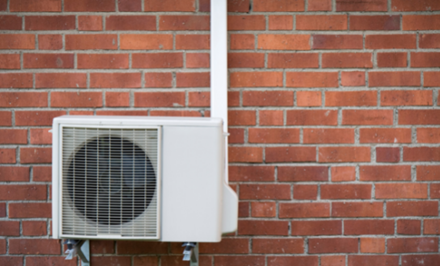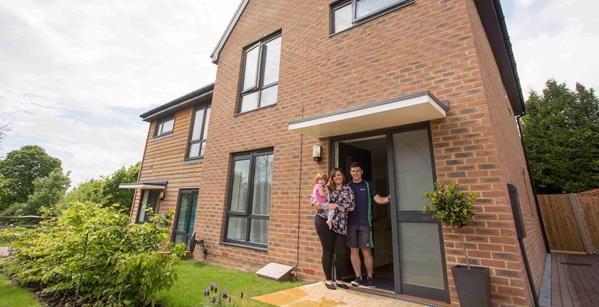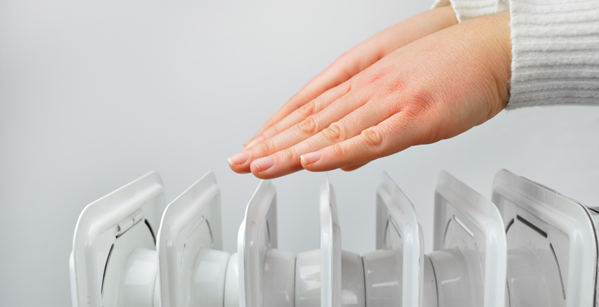Did you know that many Hastoe homes have renewable energy systems?
We use six different types of renewable energy systems in our properties. Some of our houses even have more than one type of system. The main benefit of these renewable systems is that they only need a small amount of electrical energy. This electrical energy converts heat from a low temperature to a higher one. This heat can be used to power radiators and heat water.
These types of systems are becoming more common. New changes in government laws will see most new homes being fitted with these types of technology. This is an effort to move away from heating homes and making hot water using gas or electrical boilers.
Understanding your renewable energy system can save you money. They can help the good health of your family and the place you call home. If these heating and ventilation systems don't work properly or aren't used well, then they can add to damp and mould issues. For this reason, it's really important to make sure they're working. Below you can find out some useful information about these systems and how they work.
-
Air Source Heat Pumps
Air Source Heat Pumps (ASHP) draw in air from outside. The ASHP absorbs the heat from the air outside into a liquid refrigerant at a low temperature. It then compresses the liquid to increase its temperature. It can then release this stored heat to send heat to your heating system.
ASHP technology is very energy-efficient and can provide significant savings on energy bills. These savings are largest when the equipment is serviced regularly and kept in good working order.
-
Ground Source Heat Pumps
Ground Source Heat Pumps (GSHP or Geothermal Heat Pumps) use solar energy stored in the ground or water to heat the home. During construction of your home, heat pipes are laid into the earth. A mixture of water and anti-freeze is circulated through the pipes. The pipes absorb any heat stored in the ground. This is then compressed, sent through a heat exchanger and transferred to the pump. It can then heat your heating system.
One of the benefits of GSHP over other systems is that temperatures in the ground are more consistent. They offer a long-term, reliable source of heat. Regular servicing and repairs are required to make the most savings on energy bills.
-
Solar Thermal Systems
Solar Thermal systems (solar water heating) use the energy from the sun to provide hot water for the home.
Energy from the sun warms solar collectors, usually placed on the roof of your home. The liquid inside these collectors is heated and passed into a heat exchanger coil inside your hot water cylinder. Solar Thermal systems do not need direct sunlight to work so they still provide hot water on cloudy days.
These systems can help to reduce energy bills. They work best with regular maintenance and service visits. Hastoe is responsible for servicing the equipment inside your home on an annual basis. The actual solar collectors, or panels, do not require regular servicing.
-
Mechanical Ventilation with Heat Recovery
Mechanical Ventilation with Heat Recovery (MVHR) is usually designed into a home prior to construction. It prevents potential ventilation heat losses. It works by re-using and distributing warmth from internal space heating systems.
Some of the benefits of this type of system:
- Rooms are provided with pre-warmed/cooled fresh air with the use of fans and a heat exchanger.
- Wet rooms, such as bathrooms and kitchens, are extracted on a continual basis. This removes excess moisture from the air.
- Airflow and filtering keeps mould, fungus and dust mite levels low.
- Extracted air is not re-introduced or recycled. This makes sure that germs and pathogens are less likely to spread through the system.
- Helps to stop a build-up of air pollution within the home and from external sources.
- Helps eliminate bad smells.
- Most systems come with pollen filters to help reduce allergens.
MVHRs use very little energy compared to normal air conditioning systems which have a large impact on CO2 footprints and heating costs. It is important that regular servicing is done to keep these systems working at their best.
-
Rainwater Harvesting Systems
These systems collect rainfall into a tank located either above or below ground. They are connected to the plumbing system of your home. They can provide you with rainwater or ‘grey’ water to flush toilets.
This equipment could save you money on mains water usage. This is particularly important for those residents who have a water meter fitted to their home. It is important that you allow Hastoe access to service and maintain any equipment at least once a year, even if you choose not to regularly use this system.
-
Photovoltaic panels
Photovoltaic panels are also known as solar panels. They capture the sun’s energy in cells and convert this energy into electricity to be used in the home. Photovoltaic panels work effectively even on cloudy days because they aren’t reliant on direct sunlight.
Most photovoltaic panel systems don’t normally store electricity. Any electricity that isn’t used in the home will be exported back to the National Grid.
We know that moving into a home with any of the above types of renewable systems may take a while to get used to. We are very proud to be able to offer the benefits of renewable systems in our homes. In order for this equipment to work at its best, it is important that residents who hold tenancies allow access for our contractors when they need to carry out servicing. Please tell us us of any problems you may have as soon as possible. If you are a shared owner or leaseholder, you should refer to your individual lease to find out your repair and servicing responsibilities.
It is also important that heavy furniture does not block access to this equipment when an engineer comes to visit.
If you have a new or existing renewable energy system repair that you would like taken care of or require an update on, please continue to contact our customer services team.This helps us to monitor the progress of your repair and respond to you directly.








